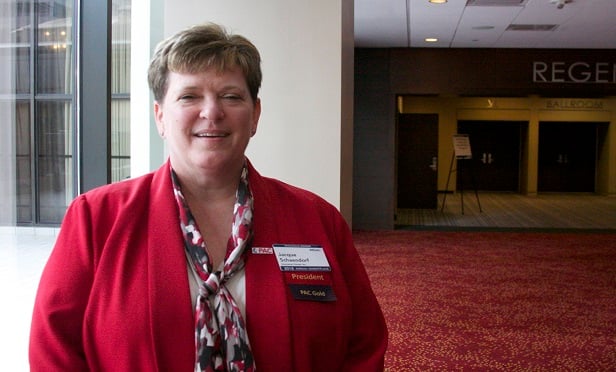 WSIA President Jacque Schaendorf is pictured during the 2018 Annual Marketplace in Atlanta, Ga. (Photo by Shawn Moynihan)
WSIA President Jacque Schaendorf is pictured during the 2018 Annual Marketplace in Atlanta, Ga. (Photo by Shawn Moynihan)
When the announcement was made that you'd been elected President during the Spring Summit in Phoenix, there was a surge of enthusiasm from those in the audience, a palpable feeling shared that this is someone who's known for getting things done, who is well-liked and extremely capable, and is deserving of the role. I'd love your thoughts on that, and what was going through your mind at that moment.
Recommended For You
Want to continue reading?
Become a Free PropertyCasualty360 Digital Reader
Your access to unlimited PropertyCasualty360 content isn’t changing.
Once you are an ALM digital member, you’ll receive:
- Breaking insurance news and analysis, on-site and via our newsletters and custom alerts
- Weekly Insurance Speak podcast featuring exclusive interviews with industry leaders
- Educational webcasts, white papers, and ebooks from industry thought leaders
- Critical converage of the employee benefits and financial advisory markets on our other ALM sites, BenefitsPRO and ThinkAdvisor
Already have an account? Sign In Now
© Touchpoint Markets, All Rights Reserved. Request academic re-use from www.copyright.com. All other uses, submit a request to [email protected]. For more inforrmation visit Asset & Logo Licensing.








